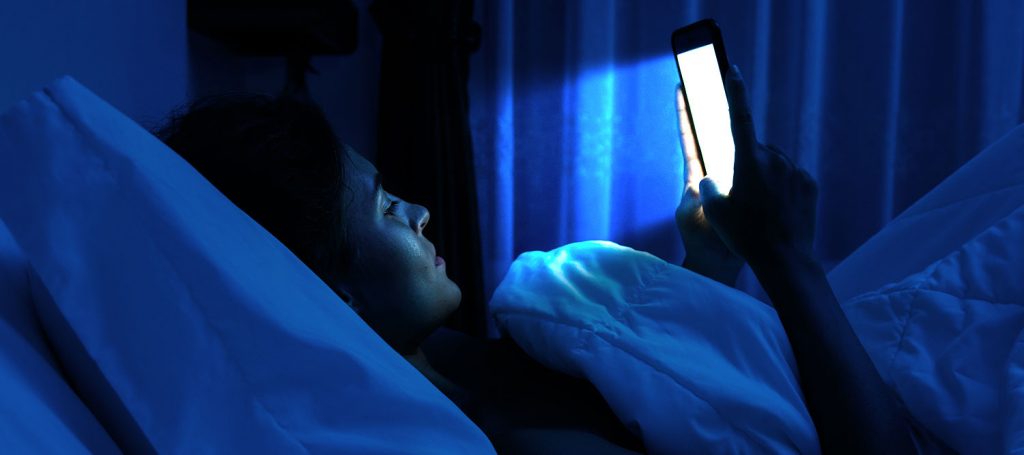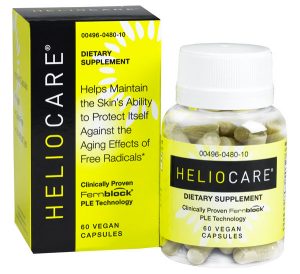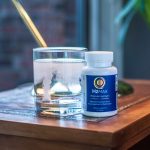Read Time: 2.5 Minutes
Many people today know that the intense blue light from the sun can be damaging to the skin. Wearing sunscreen and avoiding direct sunlight can help prevent skin damage. However, these days, staying inside brings its own challenges and risks, due to the increasing prevalence of HEV or (High Energy Visible light.) This is the blue light generated by cell phones, computers, tablets and TVs. In post-pandemic life, this light is all but inescapable, and it can have damaging effects on your skin.
By some estimates, we are spending 50% of our lives staring into a screen these days. This has only grown in the past few years, when many of us are doing Zoom and Microsoft Teams video conference calls for work, watching more TV, and communicating with friends and family via video apps like Facetime.
How Blue Light Harms Your Skin
The blue light generated by these devices disrupts the natural circadian rhythm of the skin, altering our DNA and and causing oxidative skin damage. A 2018 study in the Journal of Biomedical Physics and Engineering[1] found that many dermatologists today believe the detrimental effects of the light produced by smartphones and other devices can lead to skin damage, increasing the appearance of wrinkles and accelerating aging.

These effects are not always noticeable right away; like sun exposure, the damage is cumulative. According to a study in International Journal of Cosmetic Science[2], with repeated exposure to blue light, your skin’s natural circadian cycle gets thrown out of whack, leading to more skin damage over time.
Another study, published in Oxidative Medicine and Cellular Longevity[3] in 2015, suggests that exposure to blue light can stimulate the production of free radicals in the skin, which can accelerate the appearance of aging.
Keep Your Skin Protected
The use of communication devices – and the accompanying blue light – will likely only increase in the years to come. Though we can’t avoid blue light completely, we can help our skin protect itself from the harmful effects of blue light, as well as UVA sunlight, by addressing the issue of free radicals. This is accomplished by taking a little-known fern extract with antioxidant properties called Polypodium Leucotomos or PLE, which has been studied for over 25 years*.
 One particular proprietary form of PLE, found only in Heliocare®, has been studied extensively by leading American and international dermatologists for its ability to help resist free radicals, leading to positive effects on the skin.*
One particular proprietary form of PLE, found only in Heliocare®, has been studied extensively by leading American and international dermatologists for its ability to help resist free radicals, leading to positive effects on the skin.*
Heliocare has been on the market for a number of years now. It has been used safely – and successfully – by tens of thousands of users. Heliocare has even been voted Best Beauty Buy award winner by the prestigious beauty magazine InStyle for two years in a row, and it was awarded Prevention Magazine’s 2022 Healthy Skin Award for Best Skin Supplement and Shape Magazine’s 2022 Skin Award for Best Sun Protection. It’s no wonder a recent study even found 87% of dermatologists surveyed recommend Heliocare to their patients!
Learn more about Heliocare and PLE at Heliocare.com. You can find Heliocare today at Walgreens or Amazon.
Available At:
[1] Arjmandi, N., Mortazavi, G., Zarei, S., Faraz, M., & Mortazavi, S. (2018). Can Light Emitted from Smartphone Screens and Taking Selfies Cause Premature Aging and Wrinkles?. Journal of Biomedical Physics and Engineering, 8(4), 447–452.
[2] Dong, K., Goyarts, E.C., Pelle, E., Trivero, J. and Pernodet, N. (2019), Blue Light Disrupts the Circadian Rhythm and Create Damage in Skin Cells. International Journal of Cosmetic Science , 41: 558-562. [3] Staffan Vandersee, Marc Beyer, Juergen Lademann, Maxim E. Darvin, “Blue-Violet Light Irradiation Dose Dependently Decreases Carotenoids in Human Skin, Which Indicates the Generation of Free Radicals”, Oxidative Medicine and Cellular Longevity, vol. 2015, Article ID 579675, 7 pages, 2015. https://doi.org/10.1155/2015/579675*These statements have not been evaluated by the Food and Drug Administration. This product is not intended to diagnose, treat, cure, or prevent any disease
Last modified: December 13, 2022





